- Kids can experience a range of complex feelings just as adults do.
- They usually don’t have the words or emotional skills to manage their feelings and this may lead to them behaving in a problematic way.
- Learning to identify, express and manage feelings in a healthy way is an important part of a child’s development and leads to positive attitudes and behaviours later in life.
- Learning how to manage feelings takes time, practice and patience.
How to support tamariki with their feelings
Key points on how to support tamariki with their feelings

1. Be a good role model
Children watch and learn how to express their feelings from the adults around them. Make sure you’re managing your own feelings in a healthy way and by being a good role model. For example, if you feel upset about losing your keys, say out loud, “I’m upset I lost my keys” then model a healthy way to react such as taking deep breaths and calmly looking for them.
2. Name the feeling
Help your child name the emotion they are feeling, eg, happy, jealous, frustrated or sad. Naming feelings is the first step towards helping kids understand how they’re feeling and helps them build a list of those words to use. This helps them express themselves and then understand why they are feeling that way. For example, “I’m feeling sad because nobody will play with me”.
3. Accept their feelings
It’s important to let kids experience the whole range of human emotions. Try not to make light of or dismiss what they’re feeling by saying they are being silly or over-reacting. Resist the urge to make their bad feelings go away. Instead support them to identify and express their feelings so they feel heard and understood.
4. Recognise other people’s feelings
Help your child recognise the feelings in others so they can learn to understand and share feelings (empathise). Encourage them to think about how someone else is feeling and why. Reading picture books provides an opportunity to talk about feelings and it helps kids learn to recognise feelings through facial expressions.
5. Praise don’t punish
Praise your child when they talk about their feelings or express them in a healthy way. This lets them know it’s OK to talk about feelings and it also reinforces their behaviour so they are more likely to do it again. Don’t punish them for “bad” emotions as this stops them expressing their emotions and they may bottle things up which can lead to meltdowns.
6. Teach some coping strategies
You can teach, and model, some ways for your tamariki to manage their emotions. For example, show them how to take deep breaths to help them calm down. Encourage them to take some time out by themselves and find a quiet place to relax.
7. Give them a hug
Never underestimate the power of a hug or cuddle if your child is feeling upset. Tamariki need to feel bonded and connected to the adults in their lives and hugging has been shown to help regulate emotions.

Video: Mauri Tau therapeutic story for tamariki
(He Paiaka Totara, NZ, 2022)
Video: Kei whea a Mauri Tau – reo Māori
(He Paiaka Totara, NZ, 2022)
Little children can have big emotions and even as your child grows they may find it hard to describe how they’re feeling.
Reading books together about feelings is a great way to start a conversation – we’ve picked a few of our favourites to share with you.
My many coloured days
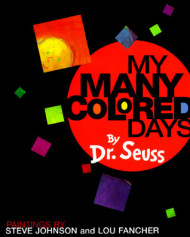
Written by Dr Seuss
Paintings by Steve Johnson and Lou Fancher
Published: 20 August 1996
This book, published after the author died, is simple and colourful and helps children associate colours with feelings: “On purple days I’m sad. I groan. I drag my tail. I walk alone”. A great book to help younger children start to describe how they’re feeling.
You can buy this at most bookstores in Aotearoa New Zealand such as Paper Plus, Trade Me.
In my heart – a book about feelings
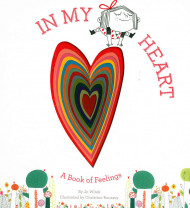
Written by Jo Witek
Illustrated by Christine Roussey
Published: 1 October 2014
This is a good book for younger children to learn more about their feelings. Readers will love the heart cut-out on each page that changes with each new emotion. Writing such as “When I get really angry, my heart feels as if it’s going to explode! Don’t come near me! My heart is yelling, hot and loud. This is when my heart is mad”, can help children to visualise their feelings.
You can buy this book at Paper Plus, Whitcoulls, Kmart and other retailers.
Feel a little – little poems about big feelings
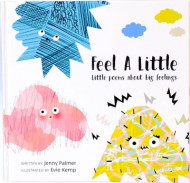
Written by Jenny Palmer
Illustrated by Evie Kemp
Published: 26 February 2017
A lovely book filled with 14 colourful characters and poems about feeling sad, happy, curious and more. This is a great book to read aloud to younger children and older children may enjoy reading it on their own.
The feel brave books

Written by Avril McDonald
Illustrated by Tatiana Minima
This collection of five beautifully written and illustrated books focuses on a young wolf named Wolfgang who finds himself in different situations that cause him to feel a range of emotions such as scared, sad and worried. Each book is written to help children learn from real life situations and offers some simple coping strategies.
- The Wolf Is Not Invited
- The Grand Wolf
- The Wolf and the Shadow Monster
- The Wolf’s Colourful Coat
- The Wolf and the Baby Dragon
You can find the full collection on the Feel Brave website.(external link)
Wilma Jean the worry machine
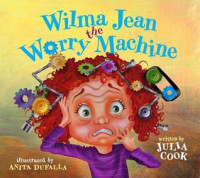
Written by Julia Cook
Illustrated by Anita DuFalla
Published: 15 January 2012
Wilma Jean the Worry Machine follows Wilma as she encounters lots of “what if” moments during her day. The book is aimed at primary school children dealing with anxiety and offers practical tools for children to feel more in control of their anxiety and helpful strategies for parents.
Read a review on the Good Reads website(external link)
What to do when you worry too much – a kid’s guide to overcoming anxiety
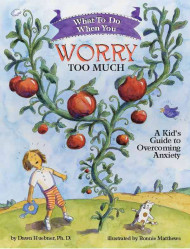
Written by Dawn Hueber
Illustrated by Bonnie Matthews
Published: 1 September 2005
This is an interactive self-help book designed for 6 to 12-year-olds living with anxiety. It offers children and parents some cognitive-behavioural techniques and provides metaphors to explain difficult concepts.
Use Google to find this book – available at plenty of bookstores in Aotearoa New Zealand.
References
- Supporting tamariki with their feelings(external link) Brainwave, NZ
- Helping kids identify and express feelings(external link) Kids Helpline, AUS
- 5 ways to help children identify and express their emotions(external link) Mindchamps, Singapore, 2017
Credits: Healthify editorial team. Healthify is brought to you by Health Navigator Charitable Trust.
Page last updated:





